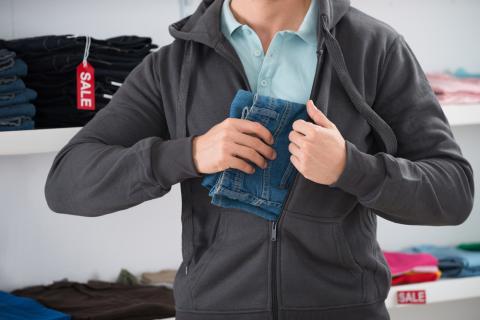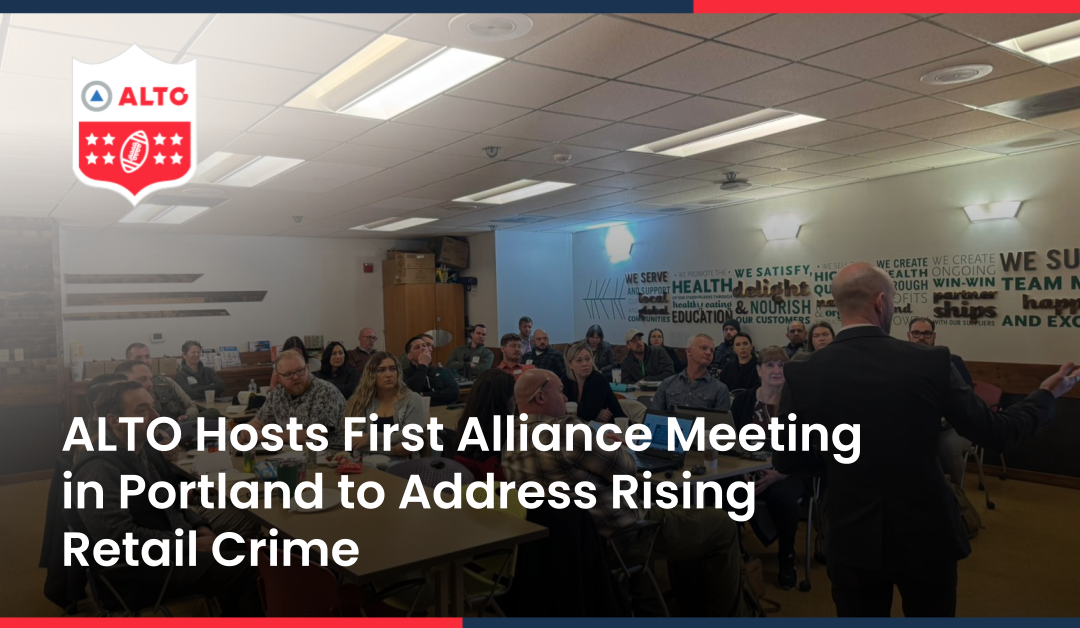By Cristian Lopez; originally published in Chain Store Age on January 18, 2024.
Retail crime has detrimental consequences, impacting the safety of store employees, their job security, sales figures, and the overall health of businesses. These consequences manifest as less secure environments for businesses, employees, and consumers to thrive, as well as locked products, reduced sales and inventory losses.
A recent survey found that nearly two-thirds (61%) of retail employees are at least somewhat concerned about their personal safety at work, citing incidents of theft (64%), grab and run incidents (44%), loitering (42%), organized retail crime rings (22%), vandalism (17%) and more that had occurred in their stores in the past year. When employee safety is at risk, it’s about more than just petty theft alone.
Often referred to as organized retail crime (ORC), there exist career criminals and organized groups who engage in theft on a daily basis, frequently targeting the same locations and stores. ORC has become a significant concern, made worse by an increase in violent incidents. In 2022, 81% of respondents reported that ORC offenders had become more violent, and compounding that in 2023, more than 67% said they were seeing even more violence and aggression than they had the year before.
Despite the growing risk of violent retail crime, there remain conflicting points of view bringing its rise and severity into question. In reality, retail crime and retail crime data are two different things. The real issue is shopper and employee safety – which is still in jeopardy and presents a threat regardless of whether data shows crime going up or down.
Retail crime threatens employees and communities
Working in retail is a common experience for many Americans – 32% of all first jobs were in retail and six-in-10 have worked a retail job at some point in their lives. Even if you’ve never worked in retail, you probably know someone who has, and the last thing anyone wants is to feel unsafe at their job.
Unfortunately, safety threats are becoming more prevalent: in a recent survey, 76% of retailers reported ORC resulted in the physical assault of an employee. It’s important to protect the well-being and safety of those who work for retailers targeted by ORC, but this escalation in violence has made containing it more challenging, creating a cycle of criminal activity.
These crimes have a detrimental impact on the retail landscape, and thus, society at large. Increasingly, headlines point to the business impact of retail crime on communities, as retailers shutter their doors in certain locations due to retail losses, shrinkage, and the safety threat to consumers and employees. And employees are starting to speak up – in a recent labor strike, Macy’s retail workers demanded their employer do more to protect their safety.
Safety is a national issue, and violent incidents of ORC should be of growing concern. When you allow quality-of-life crimes to persist, criminals become emboldened.
We need a new approach to retail crime reduction
Increasingly, stores are implementing strategic theft prevention measures to counteract the rising incidents of theft and retail crime. These include securing expensive items, employing magnetic or radio sensors, using dye packs, installing overhead curved mirrors, implementing video surveillance, hiring security guards, and providing employee training on identifying shoplifters. While preventive measures like these may help address the problem temporarily, they also can disrupt the consumer shopping experience and often make it more difficult for employees to do their jobs.
Meanwhile, more tech-driven preventive solutions, such as security cameras, security tags, and alarms, among other technologies, can be more beneficial by enabling additional data about incidents. However, without the right actions and consequences, data is just that: data. These preventive measures need to be taken a step further — aggregating data into incident reports to build a case and an action plan that ensures accountability.
There’s another overlooked aspect of retail crime that needs attention: We truly don’t know the impact of retail crime today. Incidents of theft often go unreported for various reasons, including low morale among employees due to repeated shoplifting or ORC events, or witnessing offenders not being held accountable for their actions due to a lack of resources. The victims – often retailers themselves – of retail crimes often find themselves lacking adequate representation in the legal process, perpetuating a cycle of recidivism and facing obstacles in seeking justice.
Collaboration is key to safer, more prosperous communities
These legal gaps, unreported incidents, economic impacts, and low employee morale underscore the urgent need for initiatives that reaffirm community safety and the importance of a protective system. Addressing these issues requires not only innovative and long-term solutions that ensure accountability but most importantly, strong community support and cooperation.
Examples of this type of collaboration are beginning to emerge. Some states have formed dedicated task forces or proposed new laws specifically aimed at targeting ORC, while many retailers have begun sharing information with one another to build stronger cases against violent repeat offenders. Yet, to truly attack these threats to businesses and community safety, we must take it a step further by addressing the missing link between the public and private sectors.
By establishing robust partnerships and collaboration with retailers, law enforcement, prosecutors, nonprofit organizations, and government officials, we can drive tangible change. This concerted effort extends to stores, communities, and courtrooms across the nation, with the goal of reducing crime risks, lowering recidivism rates, expanding community outreach, and boosting employee morale and safety.
There is no one-size-fits-all approach to tackling retail crime and business disruption, but collaboration – paired with advocacy to ensure repeat offenders are held accountable – can open the door to more effective solutions.



